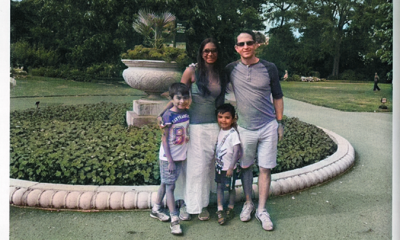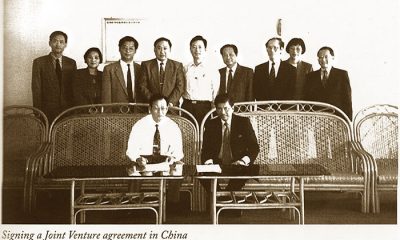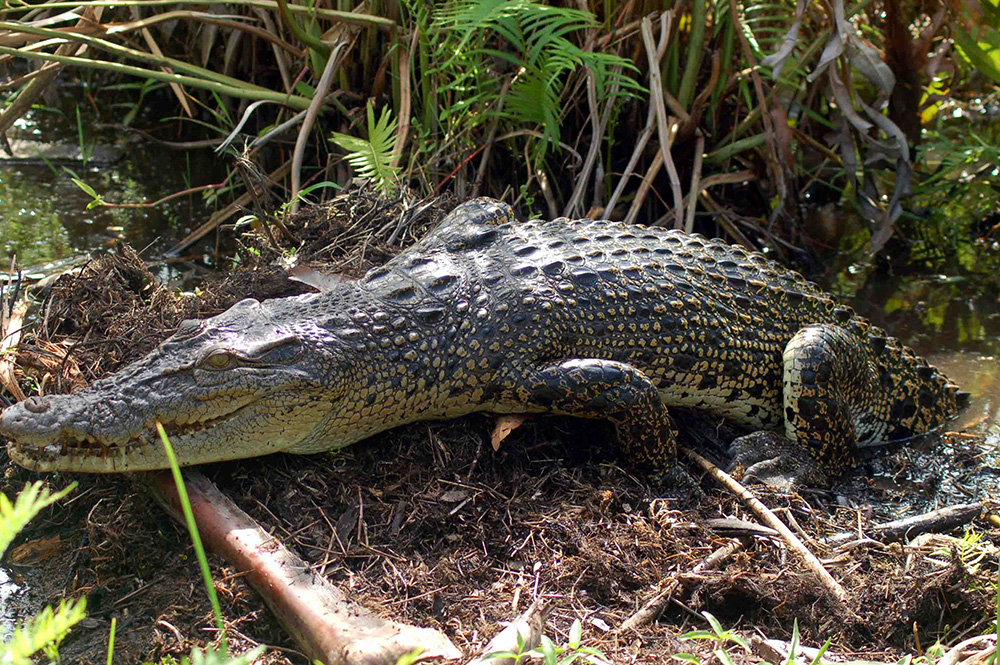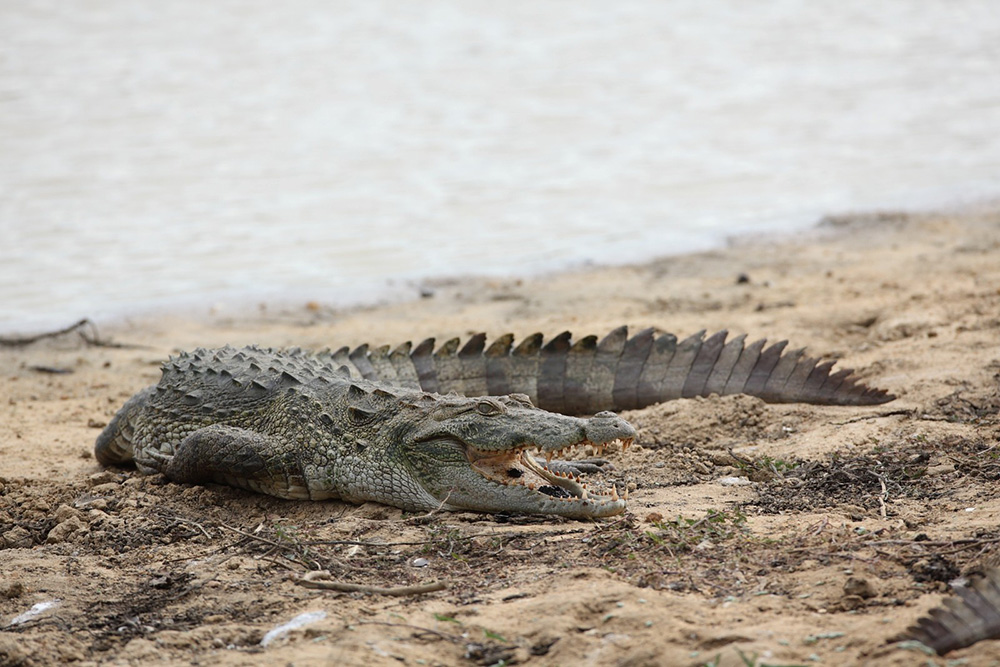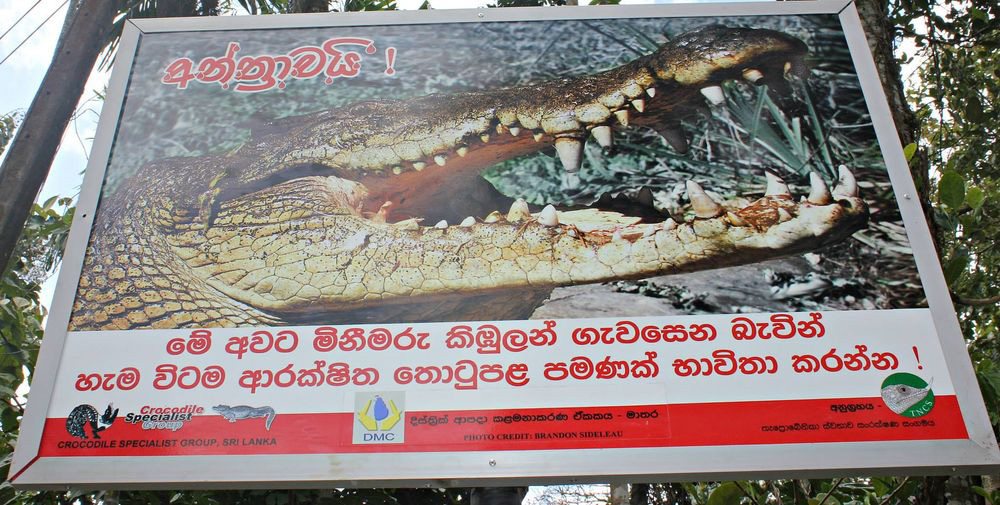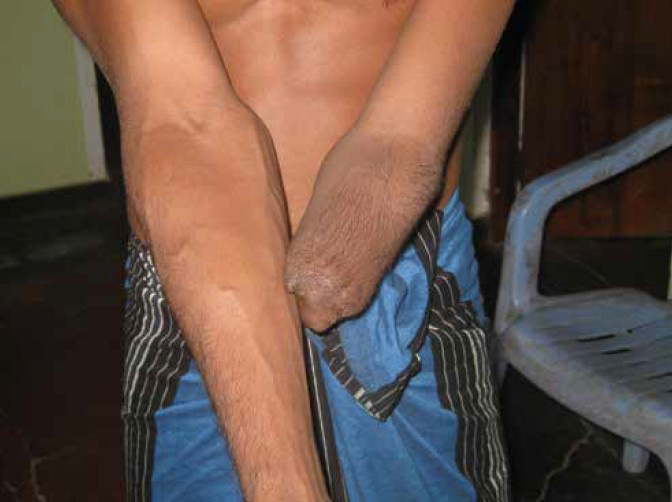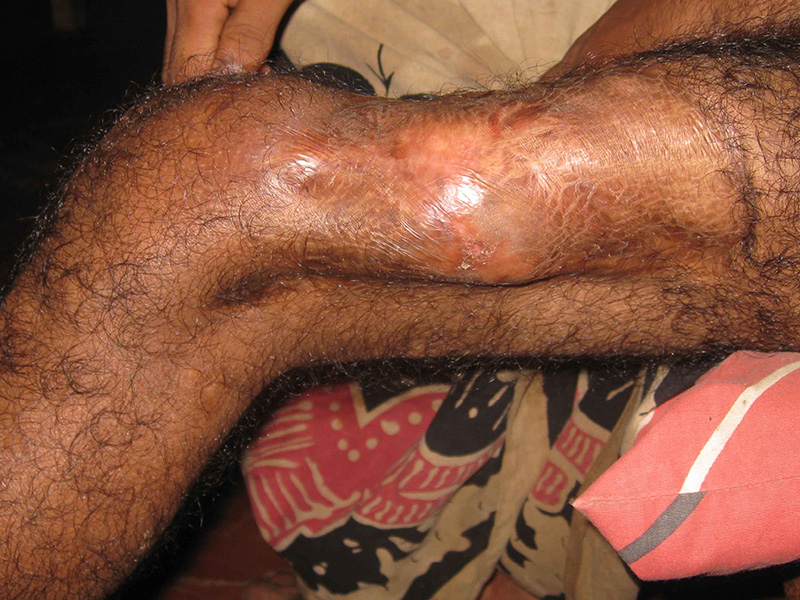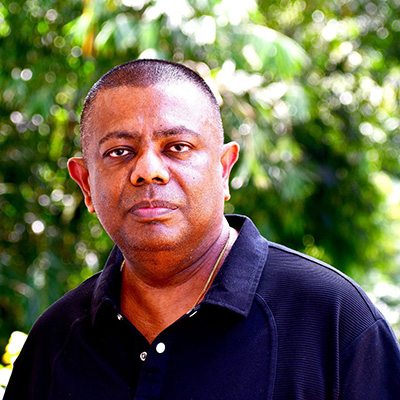Features
Settling into my job in London and helping Colombo in a delicate New Delhi assignment
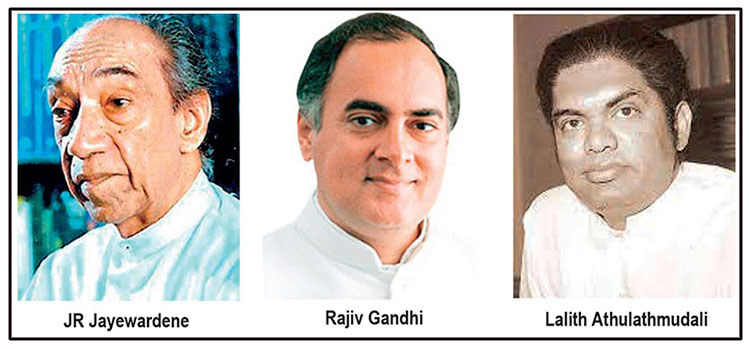
(Excerpted from the memoirs of Lalith de Mel)
After completing what may be described as my probationary period, I was ready to settle down to what I hoped would be a long and successful career. My first task was to really understand how Corporate Headquarters worked and how the various roles all fitted together so that I could make a success of whatever role I was given.
The Main Board had three Group Directors, each managing a piece of overseas territory. There was a separate Director for the UK and a Director of Finance and the Chief Executive who reported to the Chairman. The Group Director was responsible for developing, in collaboration with the heads of the businesses, the strategy for each country and compiling a comprehensive business plan dealing with all aspects of the business such as manufacture, supply chain, marketing, finance and human resources. These plans were presented to the Main Board. It was the responsibility of the Group Director to implement the agreed plan and he reported on the progress to the Chief Executive.
The Group Director was responsible for the larger businesses and his Regional Director performed an identical function for the smaller countries that were his responsibility. He had to present the business plan to his Group Director (not to the Main Board) and was accountable to him for implementing the plan. He liaised directly with the heads of the relevant business.
Many things in a business plan do not work out exactly as intended in the agreed plan. A good part of the job was fixing problems, identifying the support that was helpful, and providing it. This led to meetings to discuss the issues and the solutions. In the participative style of management, a number of people had to be brought into the discussion process and life was a series of meetings at Corporate or in the businesses. All of this meant constant traveling.
Lalith’s first job was to take over the role from his predecessor as the Regional Director for the Indian subcontinent, Singapore and Malaysia. He would report to the Group Director responsible for the whole Overseas Group, Ted Wright.
Another role
When the Chairman or Chief Executive visited an overseas business, the Regional Director had to accompany him. My first such role was when Sir James Cleminson, the Chairman, and Lady Judy Cleminson visited the Indian business and the businesses in Singapore and Malaysia, which at the time were based on exports from the UK. My first task was to develop the programme. Draft programmes were proposed by the business and I would discuss it with the Chairman and send back the amendments required.
These were very detailed programmes, which include sightseeing and social activities such as cocktail parties and dinners. I had to prepare a succinct summary of the businesses’ performance and issues as well. I had to get him into a position to say things like ‘Why is your shoe polish market share down by one percent’? and `I am pleased that sales are up seven percent’. This left the locals in the business amazed at his in-depth knowledge of their business. They never knew that he had memorized these details from my crib sheet for him.
Lady Cleminson was well-known to be difficult. As we took off in the plane she said, ‘I don’t like this programme,’ and this went on right through the trip. Fortunately she was very interested and knowledgeable about horse racing in the UK and I was a keen follower of the sport. From the time this was discovered, she became a different person. There was an important two-year-old race coming up and we disagreed about the likely winner. This led to a five pound bet. I won the bet but forgot all about it. Then I received this letter from her with five pounds.
`Dear Lalith,
Just to prove how I pay my debts at once even though you were on a sure-fire winner anyway! So now you can re-invest it on him for the Derby next year at eight to one.
But really to thank you so much for being so patient on our quick visit to your neck of woods and also such a nice traveling companion for us to have. No worries with the constant change of plans, our diet and drinking habits, all seemed to go so smoothly and well due to your insight. Thank you very much for all you did for me and I hope the effort was worthwhile.
Best wishes,
udy Cleminson
As a thank you at the end of the trip they asked me to return to London from Singapore on Concorde with them.” Shortly after Ted Wright retired, the three Group Directors, in line with the corporate structure as described, came into being. He then reported to the Group Director responsible for Australia, New Zealand, Asia, Africa, USA and Canada.
Lalith became Regional Director for the Indian sub-continent, the whole of East Asia including Japan and China and performed a staff role for Australia, New Zealand, USA and Canada. This was a very big role as his Group Director had a vast piece of territory as his responsibility. This was also an interesting opportunity since he had no experience of the American market and they had a very successful thriving business in the US. He was pleased to be able to have an involvement in the US business supporting his Group Director.
In the multinational world, nothing ever runs smoothly for very long and no job ever evolves into a nice, routine Monday-to-Friday job. Major problems had arisen in the Australian business, which was a major contributor to Group profits. It was decided that his Group Director David Totton should relocate to Australia for some time. North America was moved to another Group Director, but he remained the link and continued to perform the staff role. John West, the Chief Executive, took over David Totton’s remaining responsibilities, Africa and both parts of Asia, and he provided the staff support role.
“I moved into an office next to his and due to location in effect became a PA as well to the Chief Executive. He did not work in a very structured fashion. He was a successful gut-feel entrepreneur. He very quickly grasped the essentials that mattered and ignored and was bored by the relatively trivial details. He would ask me to look at this, that and the other on issues that concerned him. I struggled to sift the chaff and master the art of just focusing on the core that mattered. It was a good learning experience.
There was one memorable incident. He wanted me to look at a project for acquisition. In due course I went to see him and narrated all the ratios and how they compared with our hurdle rates and took him through the potential risks. I saw him become increasingly irritated and I knew he disliked tedious detail, but I felt I had to take him through it. Finally in complete exasperation, he screamed, ‘Don’t confuse me with the bloody facts, just go and write a board paper.’
It was a great opportunity to get an insight into how the top Board worked, to see the inter-relationships between Board Directors, and to catch a glimpse of how big businesses really operated.
I had a long link with South Africa and it started with my role as a Regional Director supporting John West, the Chief Executive. Those were the days of apartheid. I did not understand why he decided to have me, a coloured person, as Regional Director for South Africa as in the normal course of business it would be necessary to visit the business. Perhaps it was his sense of humour as the Afrikaans were generally both glum and arrogant and so he may have found it amusing sending someone coloured who could give them instructions.
The main hotels were strictly white only. They had a rather ingenious way of dealing with black senior ministers of neighbouring countries who came for discussions. They were made honorary whites and so I too was made an honorary white when I visited South Africa and stayed in the white only hotels. But on a visit to the trade at a supermarket, if I needed the loo, I had to use the one for blacks!
In course of time, Mr. Totton returned to London. Life went back to what it had been before.
Delicate assignment in New Delhi for JRJ government
Whilst ruminating about my career in London, I had a telephone call from Lalith Athulathmudali, Minister for National Security in Sri Lanka.
I knew Lalith from school days, and when I was at Cambridge, he was at Oxford. He always spoke at a measured tempo with an Oxford accent. In June 1987, I received a call from Lalith speaking rapidly which was very unusual. I knew he was very agitated about something. He fired a series of questions. “Was Arun Singh employed by Reckitt and Colman in India, were you his boss, do you know him well, do you know he is the Indian Prime Minister’s closest friend and key advisor.”
I told him that I knew Arun Singh well as he had worked for Reckitt and Colman in India for many years as Head of Marketing. He reported to the CEO, Ranjit Sikand, who reported to me. He asked whether Arun, then in an exalted position, would see me if I wanted an appointment. I said I was sure he will. He wanted me to go and meet Arun Singh and convey an important message from the Government of Sri Lanka and wanted me to get on the next plane and come to Colombo.
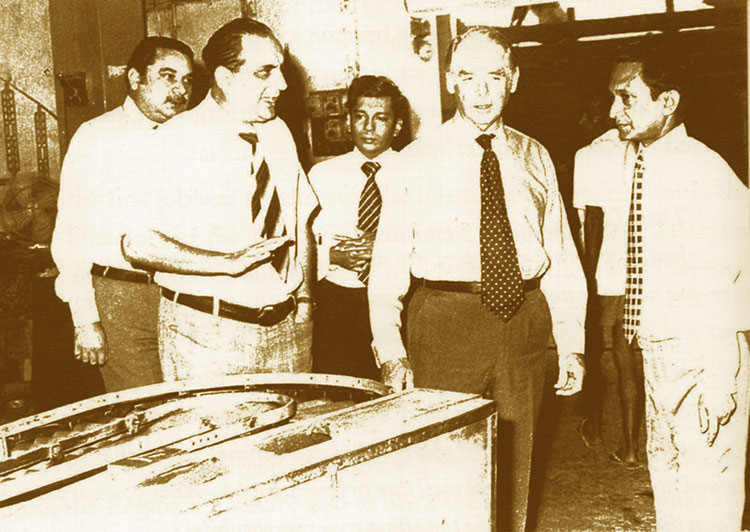
Sir James Cleminson, Chairman of Reckitt & Colman PLC, UK, on a visit to India, Lalith is third from the right, on his left Ranjit Sikand, Managing Director of the Indian business
The problem was Sri Lanka had was no soft contacts to Rajiv Gandhi or his new key officials. No people who could get close and whisper a word in the ear or leave a thought for consideration. After his mother Indira Gandhi was assassinated, Rajiv Gandhi got catapulted into the Prime Minister slot, and appointed a young team of friends to the key positions. Arun Singh, his closest friend from school days became his principal advisor. Sri Lanka had no contacts with this group.
The crisis
Lalith Athulathmudali explained the crisis. The heartland of the LTTE was Jaffna and they were surrounded by the Sri Lankan Army and there was a blockade of Jaffna. Food from outside was not getting through and the artillery fire was also causing some civilian casualties.
There was panic in Jaffna, agitation in Tamil Nadu and political pressure on the government of Rajiv Gandhi to intervene and get the blockade lifted. India had sent a message through their diplomatic channels volunteering to mediate. Sri Lanka had promptly rebuffed their overtures (A dangerous approach, with India much larger and more powerful in every way, and with the second largest standing Army in the world).
The Indian reaction to the rebuff was to send an unarmed flotilla of naval boats laden with food. They were blocked by the Sri Lankan Navy and had to turn back. The Indian response was immediate. They sent cargo planes with food but this time accompanied by Mirage fighter jets. The planes performed their mission, this time unopposed by the Sri Lankan military and dropped the food by parachutes into Jaffna. Sri Lanka had protested vehemently but India had refused to rule out further air drops.
The threat of invasion
India brushing off our protests caused panic in the high echelons of the government, and rumours of an Indian invasion were swirling around. The President and his key advisor, the National Security Minister who was Lalith Athilathmudali, feared that India on the pretext of protecting the Tamils may use the opportunity to invade and occupy Jaffna and eventually make it a new province of India just like they did with Goa.
The briefing
I arrived from London and went straight to Lalith’s residence and told him that Arun Singh had agreed to meet with me in Delhi. We then went to the presidential secretariat. After a brief chat with the Foreign Minister Hameed met the President J.R. Jayewardene, and Lalith Athulathmudali for a briefing session, on what to tell the Indians, on how to respond to their questions, and on how to end the session depending on the Indians’ attitude to our submissions.
The briefing comprehensively covered five strands. That LTTE was a terrorist organization. They did not represent the Tamil people who were living peacefully in all parts of the country. The Government was firmly committed to ensuring the well-being of the Tamils and all minorities. India being a valued and trusted friend, and importantly on how to deliver the punch line of Sri Lanka welcoming India’s help and collaboration in solving the terrorist problem.
In Delhi
I was not looking forward to the challenge of sitting across a desk and being questioned by a battery of Indian officials. I rang Arun Singh when I got to Delhi and he said “Let’s meet tomorrow at 10.30”. I asked where, and he said to come home, and added it will be just you and me. I was relieved. I went to Arun’s house which was next door to the Prime Minister’s residence and as I went in, I noticed a gate in the wall between the two houses. Nina, his wife who I knew well, greeted me and wanted me to stay for lunch. Both Arun and his wife are from princely Indian families. Arun is the second son of a Maharaja. They come from a background of gracious living and polite behaviour. Arun is very intelligent but soft spoken and always polite.
We sat in his sitting room and had a very long discussion. Arun with his forensic skill probed the Sri Lanka Government’s attitude and commitment to the well-being of the Tamil people and the way in which their concerns will be addressed. I was glad that I had been extremely well, briefed by Lalith and the President.
The end
By the time we sat down for lunch 1 felt the vibes were good. We chit chatted about old friends and at the end he said he will speak to the Prime Minister in the afternoon, asked me to come the next day and said the Prime Minister may want to meet me.
The next day he greeted me with a broad smile, and said it was not necessary to meet the PM. Arun said a message had been sent through the External Affairs Ministry and added that the Sri Lankan government will be pleased. I asked what it said and he said he could not tell me and that it was couched in formal diplomatic language.
I rang Lalith. They had got the message and were very pleased. A threat of invasion had faded away. I was warmly congratulated on completing the mission successfully. Then it was back to Colombo, a de-briefing session with Lalith and the President and then on a plane and back to my day job in London.
The Indo-Sri Lanka Accord was signed that July when Rajiv Gandhi visited Sri Lanka. Arun Singh was Defence Minister when he retired from politics. I met him a year ago when he visited London.”
Features
When floods strike: How nations keep food on the table
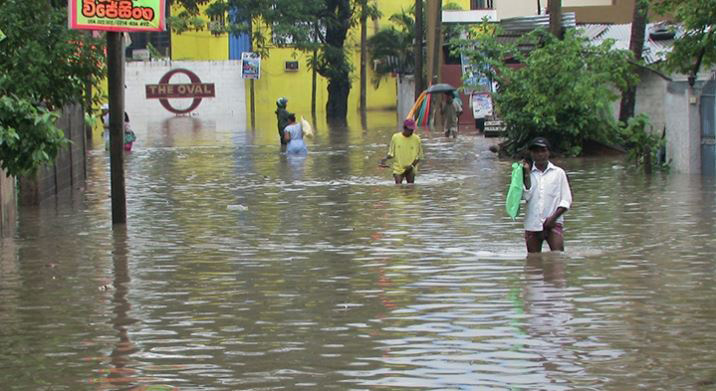
Insights from global adaptation strategies
Sri Lanka has been heavily affected by floods, and extreme flooding is rapidly becoming one of the most disruptive climate hazards worldwide. The consequences extend far beyond damaged infrastructure and displaced communities. The food systems and supply networks are among the hardest hit. Floods disrupt food systems through multiple pathways. Croplands are submerged, livestock are lost, and soils become degraded due to erosion or sediment deposition. Infrastructural facilities like roads, bridges, retail shops, storage warehouses, and sales centres are damaged or rendered inaccessible. Without functioning food supply networks, even unaffected food-producing regions struggle to continue daily lives in such disasters. Poor households, particularly those dependent on farming or informal rural economies, face sharp food price increases and income loss, increasing vulnerability and food insecurity.
Many countries now recognie that traditional emergency responses alone are no longer enough. Instead, they are adopting a combination of short-term stabilisation measures and long-term strategies to strengthen food supply chains against recurrent floods. The most common immediate response is the provision of emergency food and cash assistance. Governments, the World Food Programme, and other humanitarian organisations often deliver food, ready-to-eat rations, livestock feed, and livelihood support to affected communities.
Alongside these immediate measures, some nations are implementing long-term strategic actions. These include technology- and data-driven approaches to improve flood preparedness. Early warning systems, using satellite data, hydrological models, and advanced weather forecasting, allow farmers and supply chain operators to prepare for potential disruptions. Digital platforms provide market intelligence, logistics updates, and risk notifications to producers, wholesalers, and transporters. This article highlights examples of such strategies from countries that experience frequent flooding.
China: Grain Reserves and Strategic Preparedness
China maintains a large strategic grain reserve system for rice, wheat, and maize; managed by NFSRA-National Food and Strategic Reserves Administration and Sinograin (China Grain Reserves Corporation (Sinograin Group), funded by the Chinese government, that underpins national food security and enables macro-control of markets during supply shocks. Moreover, improvements in supply chain digitization and hydrological monitoring, the country has strengthened its ability to maintain stable food availability during extreme weather events.
Bangladesh: Turning Vulnerability into Resilience
In recent years, Bangladesh has stood out as one of the world’s most flood-exposed countries, yet it has successfully turned vulnerability into adaptive resilience. Floating agriculture, flood-tolerant rice varieties, and community-run grain reserves now help stabilise food supplies when farmland is submerged. Investments in early-warning systems and river-basin management have further reduced crop losses and protected rural livelihoods.
Netherlands, Japan: High-Tech Models of Flood Resilience
The Netherlands offers a highly technical model. After catastrophic flooding in 1953, the country completely redesigned its water governance approach. Farmland is protected behind sea barriers, rivers are carefully controlled, and land-use zoning is adaptive. Vertical farming and climate-controlled greenhouses ensure year-round food production, even during extreme events. Japan provides another example of diversified flood resilience. Following repeated typhoon-induced floods, the country shifted toward protected agriculture, insurance-backed farming, and automated logistics systems. Cold storage networks and digital supply tracking ensure that food continues to reach consumers, even when roads are cut off. While these strategies require significant capital and investment, their gradual implementation provides substantial long-term benefits.
Pakistan, Thailand, Indonesia, and Vietnam: Reform in Response to Recurrent Floods
In contrast, Pakistan and Thailand illustrate both the consequences of climate vulnerability and the benefits of proactive reform. The 2022 floods in Pakistan submerged about one-third of the country, destroying crops and disrupting trade networks. In response, the country has placed greater emphasis on climate-resilient farming, water governance reforms, and satellite-based crop monitoring. Pakistan as well as India is promoting crop diversification and adjusting planting schedules to help farmers avoid the peak monsoon flood periods.
Thailand has invested in flood zoning and improved farm infrastructure that keep markets supplied even during severe flooding. Meanwhile, Indonesia and Vietnam are actively advancing flood-adapted land-use planning and climate-resilient agriculture. For instance, In Vietnam’s Mekong Delta, pilot projects integrate flood-risk mapping, adaptive cropping strategies, and ecosystem-based approaches to reduce vulnerability in agricultural and distribution areas. In Indonesia, government-supported initiatives and regional projects are strengthening flood-risk-informed spatial planning, adaptive farming practices, and community-based water management to improve resilience in flood-prone regions. (See Figure 1)
 The Global Lesson: Resilience Requires Early Investment
The Global Lesson: Resilience Requires Early Investment
The global evidence is clear: countries that invest early in climate-adaptive agriculture and resilient logistics are better able to feed their populations, even during extreme floods. Building a resilient future depends not only on how we grow food but also on how we protect, store, and transport it. Strengthening infrastructure is therefore central to stabilising food supply chains while maintaining food quality, even during prolonged disruptions. Resilient storage systems, regional grain reserves, efficient cold chains, improved farming infrastructure, and digital supply mapping help reduce panic buying, food waste, and price shocks after floods, while ensuring that production capacity remains secure.
Persistent Challenges
However, despite these advances, many flood-exposed countries still face significant challenges. Resources are often insufficient to upgrade infrastructure or support vulnerable rural populations. Institutional coordination across the agriculture, disaster management, transport, and environmental sectors remains weak. Moreover, the frequency and scale of climate-driven floods are exceeding the design limits of older disaster-planning frameworks. As a result, the gap between exposure and resilience continues to widen. These challenges are highly relevant to Sri Lanka as well and require deliberate, gradual efforts to phase them out.
The Role of International Trade and global markets
When domestic production falls in such situations, international trade serves as an important buffer. When domestic production is temporarily reduced, imports and regional trade flows can help stabilise food availability. Such examples are available from other countries. For instance, In October 2024, floods in Bangladesh reportedly destroyed about 1.1 million tonnes of rice. In response, the government moved to import large volumes of rice and allowed accelerated or private-sector imports of rice to stabilize supply and curb food price inflation. This demonstrates how, when domestic production fails, international trade/livestock/food imports (from trade partners) acted as a crucial buffer to ensure availability of staple food for the population. However, this approach relies on well-functioning global markets, strong diplomatic relationships, and adequate foreign exchange, making it less reliable for economically fragile nations. For example, importing frozen vegetables to Sri Lanka from other countries can help address supply shortages, but considerations such as affordability, proper storage and selling mechanisms, cooking guidance, and nutritional benefits are essential, especially when these foods are not widely familiar to local populations.
Marketing and Distribution Strategies during Floods
Ensuring that food reaches consumers during floods requires innovative marketing and distribution strategies that address both supply- and demand-side challenges. Short-term interventions often include direct cash or food transfers, mobile markets, and temporary distribution centres in areas where conventional marketplaces become inaccessible. Price stabilisation measures, such as temporary caps or subsidies on staple foods, help prevent sharp inflation and protect vulnerable households. Awareness campaigns also play a role by educating consumers on safe storage, cooking methods, and the nutritional value of unfamiliar imported items, helping sustain effective demand.
Some countries have integrated technology to support these efforts; in this regard, adaptive supply chain strategies are increasingly used. Digital platforms provide farmers, wholesalers, and retailers with real-time market information, logistics updates, and flood-risk alerts, enabling them to reroute deliveries or adjust production schedules. Diversified delivery routes, using alternative roads, river transport, drones, or mobile cold-storage units, have proven essential for maintaining the flow of perishable goods such as vegetables, dairy, and frozen products. A notable example is Japan, where automated logistics systems and advanced cold-storage networks help keep supermarkets stocked even during severe typhoon-induced flooding.
The Importance of Research, Coordination, and Long-Term Commitment
Global experience also shows that research and development, strong institutional coordination, and sustained national commitment are fundamental pillars of flood-resilient food systems. Countries that have successfully reduced the impacts of recurrent floods consistently invest in agricultural innovation, cross-sector collaboration, and long-term planning.
Awareness Leads to Preparedness
As the summary, global evidence shows that countries that act early, plan strategically, and invest in resilience can protect both people and food systems. As Sri Lanka considers long-term strategies for food security under climate change, learning from flood-affected nations can help guide policy, planning, and public understanding. Awareness is the first step which preparedness must follow. These international experiences offer valuable lessons on how to protect food systems through proactive planning and integrated actions.
(Premaratne (BSc, MPhil, LLB) isSenior Lecturer in Agricultural Economics Department of Agricultural Systems, Faculty of Agriculture, Rajarata University. Views are personal.)
Key References·
Cabinet Secretariat, Government of Japan, 2021. Fundamental Plan for National Resilience – Food, Agriculture, Forestry and Fisheries / Logistics & Food Supply Chains. Tokyo: Cabinet Secretariat.
· Delta Programme Commissioner, 2022. Delta Programme 2023 (English – Print Version). The Hague: Netherlands Delta Programme.
· Hasanuddin University, 2025. ‘Sustainable resilience in flood-prone rice farming: adaptive strategies and risk-sharing around Tempe Lake, Indonesia’, Sustainability. Available at: https://www.mdpi.com/2071-1050/17/6/2456 [Accessed 3 December 2025].
· Mekong Urban Flood Resilience and Drainage Programme (TUEWAS), 2019–2021. Integrated urban flood and drainage planning for Mekong cities. TUEWAS / MRC initiative.
· Ministry of Agriculture and Rural Affairs, People’s Republic of China, 2025. ‘China’s summer grain procurement surpasses 50 mln tonnes’, English Ministry website, 4 July.
· National Food and Strategic Reserves Administration (China) 2024, ‘China purchases over 400 mln tonnes of grain in 2023’, GOV.cn, 9 January. Available at: https://english.www.gov.cn/archive/statistics/202401/09/content_WS659d1020c6d0868f4e8e2e46.html
· Pakistan: 2022 Floods Response Plan, 2022. United Nations / Government of Pakistan, UN Digital Library.
· Shigemitsu, M. & Gray, E., 2021. ‘Building the resilience of Japan’s agricultural sector to typhoons and heavy rain’, OECD Food, Agriculture and Fisheries Papers, No. 159. Paris: OECD Publishing.
· UNDP & GCF, 2023. Enhancing Climate Resilience in Thailand through Effective Water Management and Sustainable Agriculture (E WMSA): Project Factsheet. UNDP, Bangkok.
· United Nations Development Programme (UNDP), 2025. ‘Rice Bank revives hope in flood hit hill tracts, Bangladesh’, UNDP, 19 June.
· World Bank, 2022. ‘Bangladesh: World Bank supports food security and higher incomes of farmers vulnerable to climate change’, World Bank press release, 15 March.
Features
Can we forecast weather precisely?

Weather forecasts are useful. People attentively listen to them but complain that they go wrong or are not taken seriously. Forecasts today are more probabilistically reliable than decades ago. The advancement of atmospheric science, satellite imaging, radar maps and instantly updated databases has improved the art of predicting weather.
Yet can we predict weather patterns precisely? A branch of mathematics known as chaos theory says that weather can never be foretold with certainty.
The classical mechanics of Issac Newton governing the motion of all forms of matter, solid, liquid or gaseous, is a deterministic theory. If the initial conditions are known, the behaviour of the system at later instants of time can be precisely predicted. Based on this theory, occurrences of solar eclipses a century later have been predicted to an accuracy of minutes and seconds.
The thinking that the mechanical behaviour of systems in nature could always be accurately predicted based on their state at a previous instant of time was shaken by the work of the genius French Mathematician Henri Poincare (1864- 1902).
Eclipses are predicted with pinpoint accuracy based on analysis of a two-body system (Earth- Moon) governed by Newton’s laws. Poincare found that the equivalent problem of three astronomical bodies cannot be solved exactly – sometimes even the slightest variation of an initial condition yields a drastically different solution.
A profound conclusion was that the behaviour of physical systems governed by deterministic laws does not always allow practically meaningful predictions because even a minute unaccountable change of parameters leads to completely different results.
Until recent times, physicists overlooked Poincare’s work and continued to believe that the determinism of the laws of classical physics would allow them to analyse complex problems and derive future happenings, provided necessary computations are facilitated. When computers became available, the meteorologists conducted simulations aiming for accurate weather forecasting. The American mathematician Edward Lorenz, who turned into a reputed meteorologist, carried out such studies in the early 1960s, arrived at an unexpected result. His equations describing atmospheric dynamics demonstrated a strange behaviour. He found that even a minute change (even one part in a million) in initial parameters leads to a completely different weather pattern in the atmosphere. Lorenz announced his finding saying, A flap of a butterfly wing in one corner of the world could cause a cyclone in a far distant location weeks later! Lorenz’s work opened the way for the development branch of mathematics referred to as chaos theory – an expansion of the idea first disclosed by Henri Poincare.
We understand the dynamics of a cyclone as a giant whirlpool in the atmosphere, how it evolves and the conditions favourable for their origination. They are created as unpredictable thermodynamically favourable relaxation of instabilities in the atmosphere. The fundamental limitations dictated by chaos theory forbid accurate forecasting of the time and point of its appearance and the intensity. Once a cyclone forms, it can be tracked and the path of movement can be grossly ascertained by frequent observations. However, absolutely certain predictions are impossible.
A peculiarity of weather is that the chaotic nature of atmospheric dynamics does not permit ‘long – term’ forecasting with a high degree of certainty. The ‘long-term’ in this context, depending on situation, could be hours, days or weeks. Nonetheless, weather forecasts are invaluable for preparedness and avoiding unlikely, unfortunate events that might befall. A massive reaction to every unlikely event envisaged is also not warranted. Such an attitude leads to social chaos. The society far more complex than weather is heavily susceptible to chaotic phenomena.
by Prof. Kirthi Tennakone (ktenna@yahoo.co.uk)
Features
When the Waters Rise: Floods, Fear and the ancient survivors of Sri Lanka
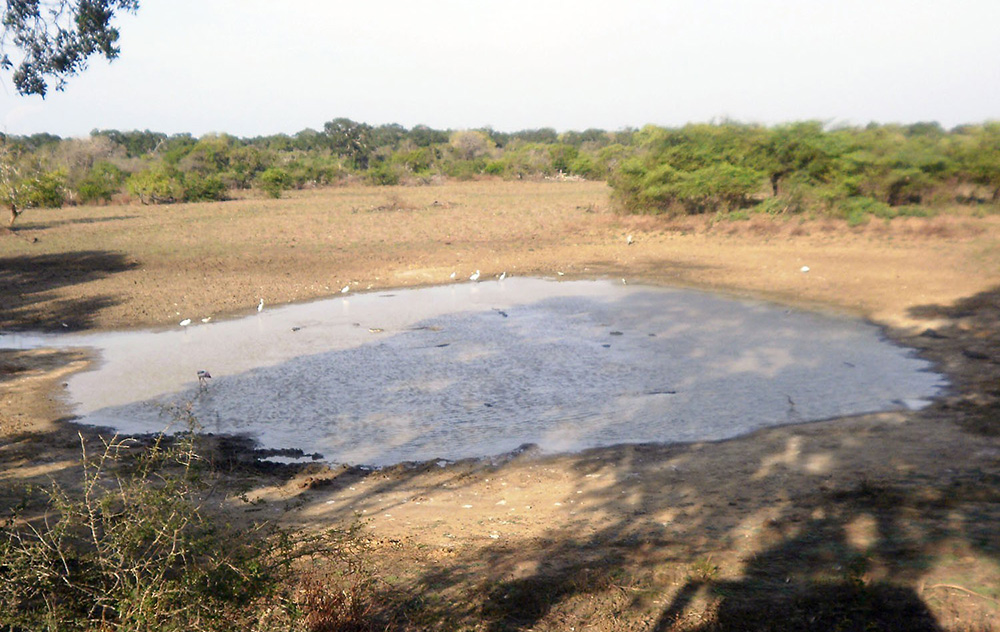
The water came quietly at first, a steady rise along the riverbanks, familiar to communities who have lived beside Sri Lanka’s great waterways for generations. But within hours, these same rivers had swollen into raging, unpredictable forces. The Kelani Ganga overflowed. The Nilwala broke its margins. The Bentara, Kalu, and Mahaweli formed churning, chocolate-brown channels cutting through thousands of homes.
When the floods finally began to recede, villagers emerged to assess the damage, only to be confronted by another challenge: crocodiles. From Panadura’s back lanes to the suburbs of Colombo, and from the lagoons around Kalutara to the paddy fields of the dry zone, reports poured in of crocodiles resting on bunds, climbing over fences, or drifting silently into garden wells.
For many, these encounters were terrifying. But to Sri Lanka’s top herpetologists, the message was clear: this is what happens when climate extremes collide with shrinking habitats.
“Crocodiles are not invading us … we are invading floodplains”
Sri Lanka’s foremost crocodile expert, Dr. Anslem de Silva, Regional Chairman for South Asia and Iran of the IUCN/SSC Crocodile Specialist Group, has been studying crocodiles for over half a century. His warning is blunt.
“When rivers turn into violent torrents, crocodiles simply seek safety,” he says. “They avoid fast-moving water the same way humans do. During floods, they climb onto land or move into calm backwaters. People must understand this behaviour is natural, not aggressive.”
In the past week alone, Saltwater crocodiles have been sighted entering the Wellawatte Canal, drifting into the Panadura estuary, and appearing unexpectedly along Bolgoda Lake.
“Saltwater crocodiles often get washed out to sea during big floods,” Dr. de Silva explains. “Once the current weakens, they re-enter through the nearest lagoon or canal system. With rapid urbanisation along these waterways, these interactions are now far more visible.”
- An adult Salt Water Crocodile (Crocodylus porosus) (Photo -Madura de Silva)
- Adult Mugger (Crocodylus plaustris) Photo -Laxhman Nadaraja
- A Warning sign board
- A Mugger holding a a large Russell ’s viper (Photo- R. M. Gunasinghe)
- Anslem de Silva
- Suranjan Karunarathna
This clash between wildlife instinct and human expansion forms the backdrop of a crisis now unfolding across the island.
A conflict centuries old—now reshaped by climate change
Sri Lanka’s relationship with crocodiles is older than most of its kingdoms. The Cūḷavaṃsa describes armies halted by “flesh-eating crocodiles.” Ancient medical texts explain crocodile bite treatments. Fishermen and farmers around the Nilwala, Walawe, Maduganga, Batticaloa Lagoon, and Kalu Ganga have long accepted kimbula as part of their environment.
But the modern conflict has intensified dramatically.
A comprehensive countrywide survey by Dr. de Silva recorded 150 human–crocodile attacks, with 50 fatal, between 2008 and 2010. Over 52 percent occurred when people were bathing, and 83 percent of victims were men engaged in routine activities—washing, fishing, or walking along shallow margins.
Researchers consistently emphasise: most attacks happen not because crocodiles are unpredictable, but because humans underestimate them.
Yet this year’s flooding has magnified risks in new ways.
“Floods change everything” — Dr. Nimal D. Rathnayake
Herpetologist Dr. Nimal Rathnayake says the recent deluge cannot be understood in isolation.
“Floodwaters temporarily expand the crocodile’s world,” he says. “Areas people consider safe—paddy boundaries, footpaths, canal edges, abandoned land—suddenly become waterways.”
Once the water retreats, displaced crocodiles may end up in surprising places.
“We’ve documented crocodiles stranded in garden wells, drainage channels, unused culverts and even construction pits. These are not animals trying to attack. They are animals trying to survive.”
According to him, the real crisis is not the crocodile—it is the loss of wetlands, the destruction of natural river buffers, and the pollution of river systems.
“When you fill a marsh, block a canal, or replace vegetation with concrete, you force wildlife into narrower corridors. During floods, these become conflict hotspots.”
Past research by the Crocodile Specialist Group shows that more than 300 crocodiles have been killed in retaliation or for meat over the past decade. Such killings spike after major floods, when fear and misunderstanding are highest.
“Not monsters—ecosystem engineers” — Suranjan Karunaratne
On social media, flood-displaced crocodiles often go viral as “rogue beasts.” But conservationist Suranjan Karunaratne, also of the IUCN/SSC Crocodile Specialist Group, says such narratives are misleading.
“Crocodiles are apex predators shaped by millions of years of evolution,” he says. “They are shy, intelligent animals. The problem is predictable human behaviour.”
In countless attack investigations, Karunaratne and colleagues found a repeated pattern: the Three Sames—the same place, the same time, the same activity.
“People use the same bathing spot every single day. Crocodiles watch, learn, and plan. They hunt with extraordinary patience. When an attack occurs, it’s rarely random. It is the culmination of observation.”
He stresses that crocodiles are indispensable to healthy wetlands. They: control destructive catfish populations, recycle nutrients, clean carcasses and diseased fish, maintain biodiversity, create drought refuges through burrows used by amphibians and reptiles.
“Removing crocodiles destroys an entire chain of ecological services. They are not expendable.”
Karunaratne notes that after the civil conflict, Mugger populations in the north rebounded—proof that crocodiles recover when given space, solitude, and habitat.
Floods expose a neglected truth: CEEs save lives—if maintained In high-risk communities, Crocodile Exclusion Enclosures (CEEs) are often the only physical barrier between people and crocodiles. Built along riverbanks or tanks, these enclosures allow families to bathe, wash, and collect water safely.
Yet Dr. de Silva recounts a tragic incident along the Nilwala River where a girl was killed inside a poorly maintained enclosure. A rusted iron panel had created a hole just large enough for a crocodile to enter.
“CEEs are a life-saving intervention,” he says. “But they must be maintained. A neglected enclosure is worse than none at all.”
Despite their proven effectiveness, many CEEs remain abandoned, broken or unused.
Climate change is reshaping crocodile behaviour—and ours
Sri Lanka’s floods are no longer “cycles” as described in folklore. They are increasingly intense, unpredictable and climate-driven. The warming atmosphere delivers heavier rainfall in short bursts. Deforested hillsides and filled wetlands cannot absorb it.
Rivers swell rapidly and empty violently.
Crocodiles respond as they have always done: by moving to calmer water, by climbing onto land, by using drainage channels, by shifting between lagoons and canals, by following the shape of the water.
But human expansion has filled, blocked, or polluted these escape routes.
What once were crocodile flood refuges—marshes, mangroves, oxbow wetlands and abandoned river channels—are now housing schemes, fisheries, roads, and dumpsites.
Garbage, sand mining and invasive species worsen the crisis
The research contained in the uploaded reports paints a grim but accurate picture. Crocodiles are increasingly seen around garbage dumps, where invasive plants and waste accumulate. Polluted water attracts fish, which in turn draw crocodiles.
Excessive sand mining in river mouths and salinity intrusion expose crocodile nesting habitats. In some areas, agricultural chemicals contaminate wetlands beyond their natural capacity to recover.
In Borupana Ela, a short study found 29 Saltwater crocodiles killed in fishing gear within just 37 days.
Such numbers suggest a structural crisis—not a series of accidents.
Unplanned translocations: a dangerous human mistake
For years, local authorities attempted to reduce conflict by capturing crocodiles and releasing them elsewhere. Experts say this was misguided.
“Most Saltwater crocodiles have homing instincts,” explains Karunaratne. “Australian studies show many return to their original site—even if released dozens of kilometres away.”
Over the past decade, at least 26 Saltwater crocodiles have been released into inland freshwater bodies—home to the Mugger crocodile. This disrupts natural distribution, increases competition, and creates new conflict zones.
Living with crocodiles: a national strategy long overdue
All three experts—Dr. de Silva, Dr. Rathnayake and Karunaratne—agree that Sri Lanka urgently needs a coordinated, national-level mitigation plan.
* Protect natural buffers
Replant mangroves, restore riverine forests, enforce river margin laws.
* Maintain CEEs
They must be inspected, repaired and used regularly.
* Public education
Villagers should learn crocodile behaviour just as they learn about monsoons and tides.
* End harmful translocations
Let crocodiles remain in their natural ranges.
* Improve waste management
Dumps attract crocodiles and invasive species.
* Incentivise community monitoring
Trained local volunteers can track sightings and alert authorities early.
* Integrate crocodile safety into disaster management
Flood briefings should include alerts on reptile movement.
“The floods will come again. Our response must change.”
As the island cleans up and rebuilds, the deeper lesson lies beneath the brown floodwaters. Crocodiles are not new to Sri Lanka—but the conditions we are creating are.
Rivers once buffered by mangroves now rush through concrete channels. Tanks once supporting Mugger populations are choked with invasive plants. Wetlands once absorbing floodwaters are now levelled for construction.
Crocodiles move because the water moves. And the water moves differently today.
Dr. Rathnayake puts it simply:”We cannot treat every flooded crocodile as a threat to be eliminated. These animals are displaced, stressed, and trying to survive.”
Dr. de Silva adds:”Saving humans and saving crocodiles are not competing goals. Both depend on understanding behaviour—ours and theirs.”
And in a closing reflection, Suranjan Karunaratne says:”Crocodiles have survived 250 million years, outliving dinosaurs. Whether they survive the next 50 years in Sri Lanka depends entirely on us.”
For now, as the waters recede and the scars of the floods remain, Sri Lanka faces a choice: coexist with the ancient guardians of its waterways, or push them into extinction through fear, misunderstanding and neglect.
By Ifham Nizam
-

 News6 days ago
News6 days agoWeather disasters: Sri Lanka flooded by policy blunders, weak enforcement and environmental crime – Climate Expert
-
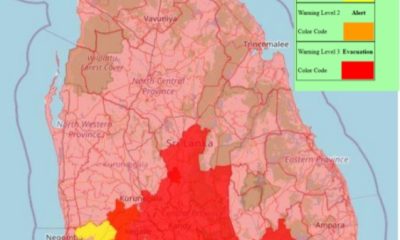
 Latest News7 days ago
Latest News7 days agoLevel I landslide RED warnings issued to the districts of Badulla, Colombo, Gampaha, Kalutara, Kandy, Kegalle, Kurnegala, Natale, Monaragala, Nuwara Eliya and Ratnapura
-
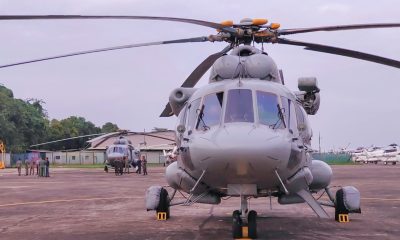
 Latest News7 days ago
Latest News7 days agoINS VIKRANT deploys helicopters for disaster relief operations
-
News3 days ago
Lunuwila tragedy not caused by those videoing Bell 212: SLAF
-
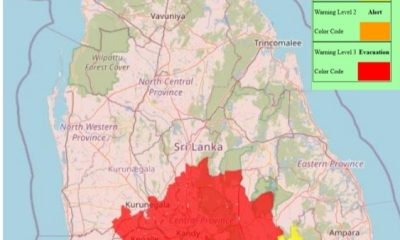
 Latest News4 days ago
Latest News4 days agoLevel III landslide early warnings issued to the districts of Badulla, Kandy, Kegalle, Kurunegala, Matale and Nuwara-Eliya
-
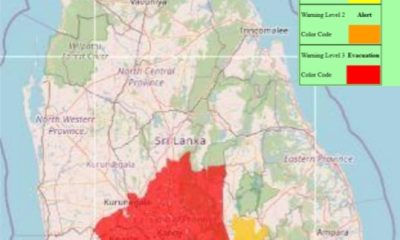
 News2 days ago
News2 days agoLevel III landslide early warning continue to be in force in the districts of Kandy, Kegalle, Kurunegala and Matale
-

 Features4 days ago
Features4 days agoDitwah: An unusual cyclone
-

 Latest News5 days ago
Latest News5 days agoUpdated Payment Instructions for Disaster Relief Contributions




